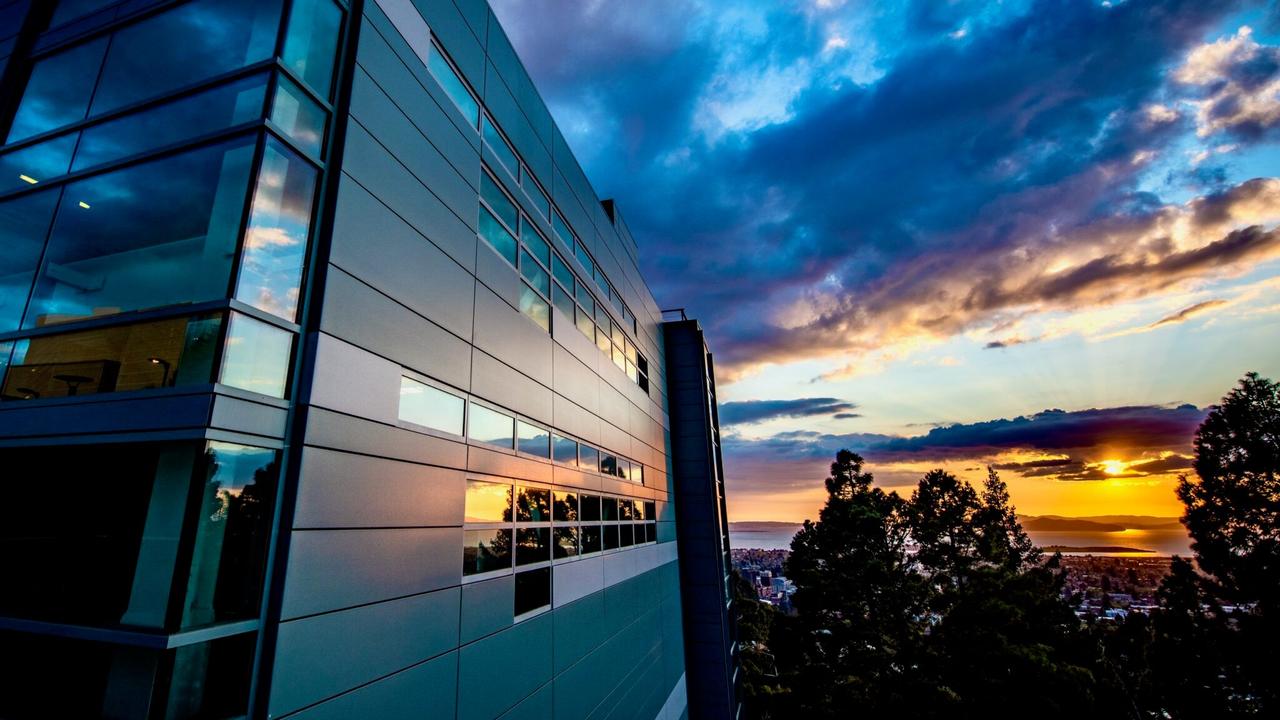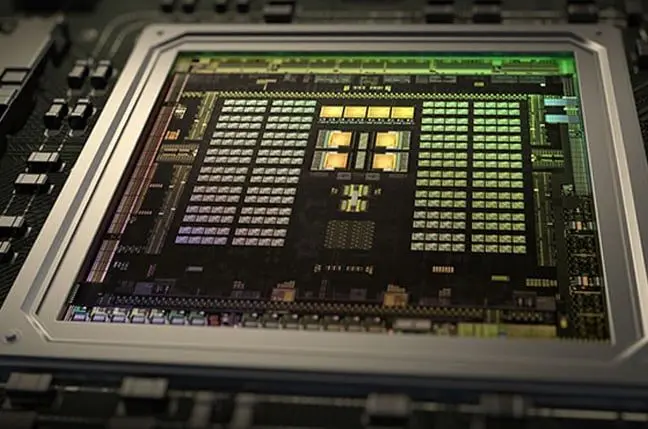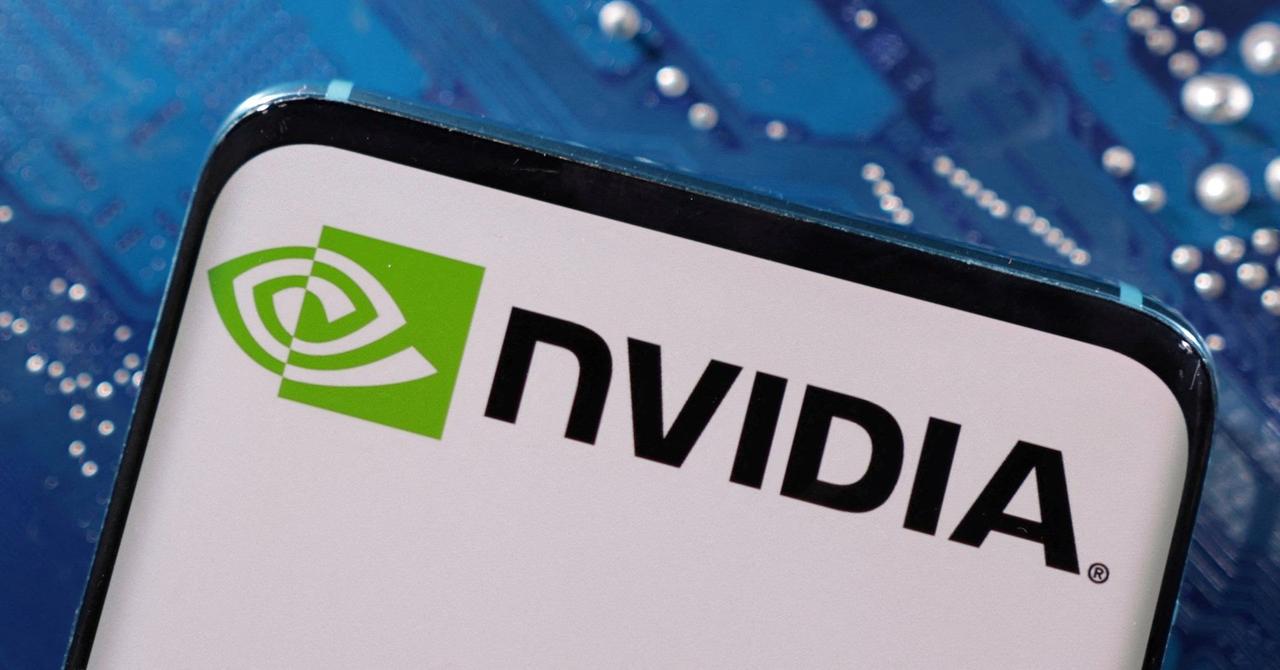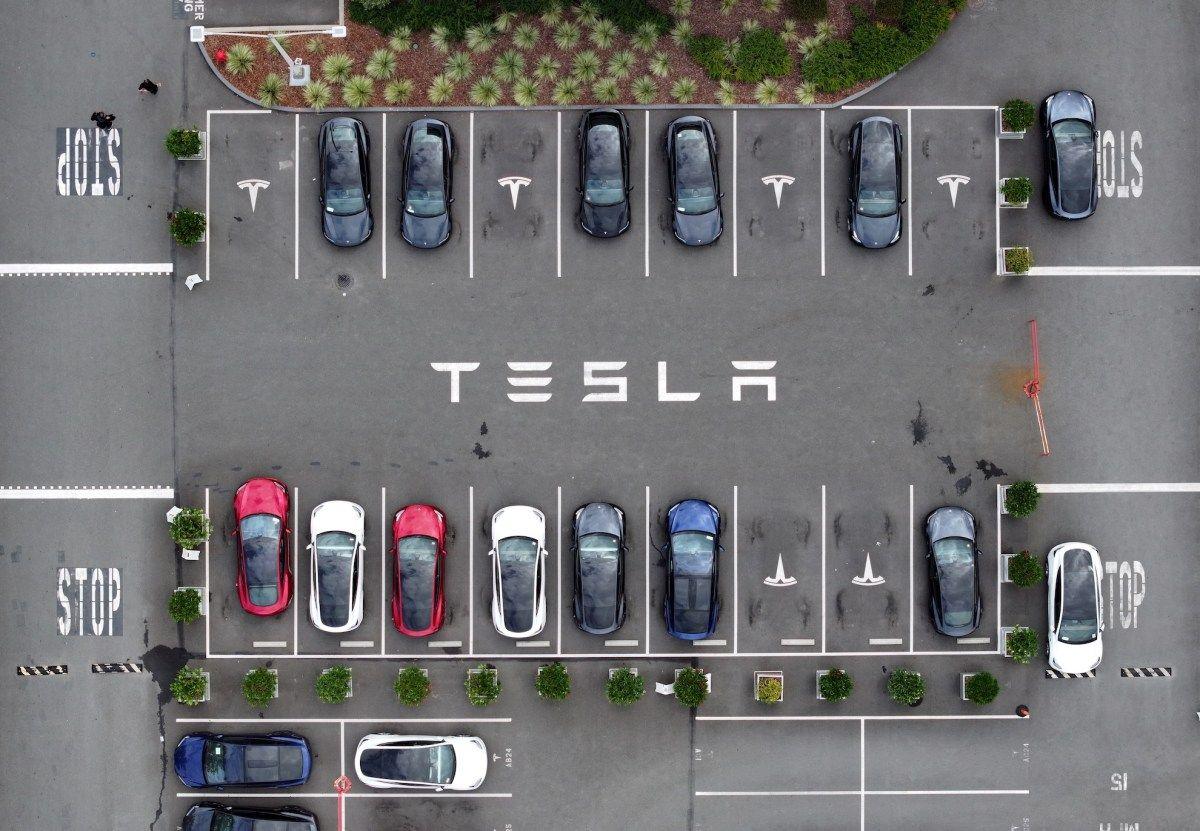Doudna Supercomputer: Dell and Nvidia Join Forces with DOE for Next-Gen AI-Powered Scientific Discovery
9 Sources
9 Sources
[1]
Nvidia Vera-Rubin chips to power DOE's Doudna supercomputer
System promises a 10x increase in 'scientific output' - not necessarily performance The US Department of Energy's next supercomputer will be built by Dell Technologies and powered by Nvidia's next-gen Vera-Rubin accelerators - a notable switch from the usual Cray-AMD tag teams that build such machines. It's the first DOE win for Nvidia since the Venado system in 2022. Named for Nobel laureate Jennifer Doudna, who pioneered CRISPR gene editing tech, the Doudna system is set to make its debut at the Lawrence Berkeley National Laboratory in California next year. Compared to its predecessor, Perlmutter, the system promises to deliver a 10x increase in "scientific output" while consuming just 2-3x the power. On first blush, that suggests the system should squeeze 790 petaFLOPS of double precision performance from between 5.8 and 8.7 megawatts of power, making it the most power-efficient supercomputer on record by a wide margin. However, that probably won't end up being the case. While we still don't know much about the GPU giant's next-gen Vera-Rubin superchips or even how many the Doudna system will feature, we do know Nvidia's latest batch of Blackwell Ultra accelerators sacrificed double-precision performance, long considered essential for scientific computing, in favor of increased use of 4-bit precision formats tailored to AI workloads. Nvidia's Blackwell Ultra-based GB300 NVL72 with 72 GPUs on board churns out just 100 teraFLOPS of FP64 vector perf. For reference, a single AMD MI300A found in Lawrence Livermore National Lab's El Capitan system is good for 61.3 double precision teraFLOPS. We can't be sure Nvidia's Rubin accelerators will continue this trend, but we suspect this is why Nvidia is claiming a greater than 10x increase in "scientific output" rather than performance. With that said, the Doudna system may not need a ton of 64-bit FLOPS to complete its mission. That's because the machine is envisioned as something of a Swiss Army knife capable of running a variety of workloads that span traditional HPC and AI, with speed being a key priority. "The Doudna supercomputer is designed to accelerate a broad set of scientific workflows," NERSC Director Sudip Dosanjh said in a statement. "Doudna will be connected to DoE experimental and observational facilities through the Energy Sciences Network (ESnet), allowing scientists to stream data seamlessly into the system from all parts of the country and to analyze it in near real time." For example, researchers plan to perform real-time plasma modeling using data streamed from the control room of the DIII-D national fusion ignition facility in San Diego. To support this, the system will feature Nvidia's Quantum-X InfiniBand networking, which will deliver up to 800 Gb/s of bandwidth per port -- 4x faster than the Slingshot NICs used in DoE's most powerful supers today. "We used to think of the supercomputer as a passive participant in the corner," Doudna chief architect Nick Wright added. "Now it's part of the entire workflow connected to experiments, telescopes, and detectors." The system is expected to serve roughly 11,000 researchers in the areas of fusion power, materials sciences, drug discovery, astronomy and protein design to name just a few. Much like El Capitan, applying AI to scientific workloads remains a major focus for the DoE. The National Energy Research Scientific Computing Center (NERSC) has previously used AI to predict novel protein structures, analyze proton data from particle accelerators, and model complex chemical reactions. And this is where we expect Nvidia's Vera-Rubin accelerators really shine. As we learned at GTC this spring, each dual GPU package will deliver 50 petaFLOPS of FP4 compute and will feature 288GB of speedy HBM4 memory. Along with AI, Doudna will also support research into quantum computing algorithms through Nvidia's CUDA-Q. The dev platform can either be used to deploy workloads on quantum processors, or simulate them on conventional CPU and GPU hardware. ®
[2]
Dell, Nvidia, and Department of Energy join forces on "Doudna" supercomputer for science and AI
Serving tech enthusiasts for over 25 years. TechSpot means tech analysis and advice you can trust. What just happened? The Department of Energy has announced plans for a new supercomputer designed to significantly accelerate research across a wide range of scientific fields. The initiative highlights the growing convergence between commercial AI development and the computational demands of cutting-edge scientific discovery. The advanced system, to be housed at Lawrence Berkeley National Laboratory and scheduled to become operational in 2026, will be named "Doudna" in honor of Nobel laureate Jennifer Doudna, whose groundbreaking work on CRISPR gene editing has revolutionized molecular biology. Dell Technologies has been selected to deliver the Doudna supercomputer, marking a significant shift in the landscape of government-funded high-performance computing. While companies like Hewlett Packard Enterprise have traditionally dominated this space, Dell's successful bid signals a new chapter. "A big win for Dell," said Addison Snell, CEO of Intersect360 Research, in an interview with The New York Times, noting the company's historically limited presence in this domain. Dell executives explained that the Doudna project enabled them to move beyond the longstanding practice of building custom systems for individual laboratories. Instead, they focused on developing a flexible platform capable of serving a broad array of users. "This market had shifted into some form of autopilot. What we did was disengage the autopilot," said Paul Perez, senior vice president and technology fellow at Dell. The Perlmutter supercomputer at the National Energy Research Scientific Computing Center at Lawrence Berkeley National Laboratory. A defining feature of Doudna will be its use of Nvidia's Vera Rubin platform, engineered to combine the strengths of traditional scientific simulations with the power of modern AI. Unlike previous Department of Energy supercomputers, which relied on processors from Intel or AMD, Doudna will incorporate a general-purpose Arm-based CPU from Nvidia, paired with the company's Rubin AI chips designed specifically for artificial intelligence and simulation workloads. The architecture aims to meet the needs of the laboratory's 11,000 users, who increasingly depend on both high-precision modeling and rapid AI-driven data analysis. Jensen Huang, founder and CEO of Nvidia, described the new system with enthusiasm. "Doudna is a time machine for science - compressing years of discovery into days," he said, adding that it will let "scientists delve deeper and think bigger to seek the fundamental truths of the universe." In terms of performance, Doudna is expected to be over 10 times faster than the lab's current flagship system, making it the Department of Energy's most powerful resource for training AI models and conducting advanced simulations. Jonathan Carter, associate lab director for computing sciences at Berkeley Lab, said the system's architecture was shaped by the evolving needs of researchers - many of whom are now using AI to augment simulations in areas like geothermal energy and quantum computing. Doudna's design reflects a broader shift in supercomputing. Traditional systems have prioritized 64-bit calculations for maximum numerical accuracy, but modern AI workloads often benefit from lower-precision operations (such as 16-bit or 8-bit) that enable faster processing speeds. Dion Harris, Nvidia's head of data center product marketing, noted that the flexibility to combine different levels of precision opens new frontiers for scientific research. The supercomputer will also be tightly integrated with the Energy Sciences Network, allowing researchers nationwide to stream data directly into Doudna for real-time analysis. Sudip Dosanjh, director of the National Energy Research Scientific Computing Center, described the new system as "designed to accelerate a broad set of scientific workflows."
[3]
Dell, Nvidia, and Department of Energy join forces on...
The advanced system, to be housed at Lawrence Berkeley National Laboratory and scheduled to become operational in 2026, will be named "Doudna" in honor of Nobel laureate Jennifer Doudna, whose groundbreaking work on CRISPR gene editing has revolutionized molecular biology. Dell Technologies has been selected to deliver the Doudna supercomputer, marking a significant shift in the landscape of government-funded high-performance computing. While companies like Hewlett Packard Enterprise have traditionally dominated this space, Dell's successful bid signals a new chapter. "A big win for Dell," said Addison Snell, CEO of Intersect360 Research, in an interview with The New York Times, noting the company's historically limited presence in this domain. Dell executives explained that the Doudna project enabled them to move beyond the longstanding practice of building custom systems for individual laboratories. Instead, they focused on developing a flexible platform capable of serving a broad array of users. "This market had shifted into some form of autopilot. What we did was disengage the autopilot," said Paul Perez, senior vice president and technology fellow at Dell. The Perlmutter supercomputer at the National Energy Research Scientific Computing Center at Lawrence Berkeley National Laboratory. A defining feature of Doudna will be its use of Nvidia's Vera Rubin platform, engineered to combine the strengths of traditional scientific simulations with the power of modern AI. Unlike previous Department of Energy supercomputers, which relied on processors from Intel or AMD, Doudna will incorporate a general-purpose Arm-based CPU from Nvidia, paired with the company's Rubin AI chips designed specifically for artificial intelligence and simulation workloads. The architecture aims to meet the needs of the laboratory's 11,000 users, who increasingly depend on both high-precision modeling and rapid AI-driven data analysis. Jensen Huang, founder and CEO of Nvidia, described the new system with enthusiasm. "Doudna is a time machine for science - compressing years of discovery into days," he said, adding that it will let "scientists delve deeper and think bigger to seek the fundamental truths of the universe." In terms of performance, Doudna is expected to be over 10 times faster than the lab's current flagship system, making it the Department of Energy's most powerful resource for training AI models and conducting advanced simulations. Jonathan Carter, associate lab director for computing sciences at Berkeley Lab, said the system's architecture was shaped by the evolving needs of researchers - many of whom are now using AI to augment simulations in areas like geothermal energy and quantum computing. Doudna's design reflects a broader shift in supercomputing. Traditional systems have prioritized 64-bit calculations for maximum numerical accuracy, but modern AI workloads often benefit from lower-precision operations (such as 16-bit or 8-bit) that enable faster processing speeds. Dion Harris, Nvidia's head of data center product marketing, noted that the flexibility to combine different levels of precision opens new frontiers for scientific research. The supercomputer will also be tightly integrated with the Energy Sciences Network, allowing researchers nationwide to stream data directly into Doudna for real-time analysis. Sudip Dosanjh, director of the National Energy Research Scientific Computing Center, described the new system as "designed to accelerate a broad set of scientific workflows." Permalink to story:
[4]
Energy Department Unveils New Supercomputer That Merges With A.I.
The DealBook Newsletter Our columnist Andrew Ross Sorkin and his Times colleagues help you make sense of major business and policy headlines -- and the power-brokers who shape them. Get it sent to your inbox. Scientific computing and artificial intelligence were once separate worlds, using different kinds of calculations on distinctly different hardware. But the two fields are steadily merging, as shown by a massive new machine coming to Berkeley, Calif. On Thursday, the Department of Energy's laboratory near the University of California, Berkeley, said it had selected Dell Technologies to deliver its next flagship supercomputer in 2026. The system will use Nvidia chips tailored for A.I. calculations and the simulations common to energy research and other scientific fields. Lawrence Berkeley National Laboratory expects the new machine -- to be named for Jennifer Doudna, a Berkeley biochemist who shared the 2020 Nobel Prize for chemistry -- to offer more than a tenfold speed boost over the lab's most powerful current system. If fully outfitted, the machine could be the Energy Department's biggest resource for tasks like training A.I. models, said Jonathan Carter, associate laboratory director for computing sciences at the Berkeley center. The supercomputer stands out for its technology choices, which indicate the growing desire for government labs to adopt more technologies from commercial A.I. systems. Nvidia chips, though widely used by big cloud companies as well as in supercomputers, were passed over by the Energy Department for three previous record-setting machines that were assembled by Hewlett Packard Enterprise. Dell has hardly been a player in the highest end of the supercomputer market, but it has had success in large commercial A.I. installations. "HPE has been sweeping the D.O.E. space," said Addison Snell, the chief executive of Intersect360 Research, which tracks the supercomputer market. "This is a big win for Dell." Supercomputers -- which are computing systems that take up entire rooms first used for jobs like designing weapons and cracking codes -- have long been symbols for national prowess in technology. The Energy Department, which typically purchases the government's biggest computers, devoted $1.8 billion over eight years to reach what the industry calls "exascale" performance, topped by a $600 million supercomputer at Lawrence Livermore National Laboratory called El Capitan. The Trump administration has not set a comparable funding target, nor has a price for the Berkeley system been released. Explore Our Coverage of Artificial Intelligence OpenAI Unites With Jony Ive in $6.5 Billion Deal to Create A.I. Devices Will Writing Survive A.I.? This Media Company Is Betting on It. Create your free account and enjoy unlimited access -- free for 7 days. Start free trial Nvidia's Chief Says U.S. Chip Controls on China Have Backfired A Tech Hub's Plan to Upgrade for the A.I. Age Runs Into Trump's Tariffs A.I.-Generated Reading List in Chicago Sun-Times Recommends Nonexistent Books At Amazon, Some Coders Say Their Jobs Have Begun to Resemble Warehouse Work How Miami Schools Are Leading 100,000 Students Into the A.I. Future Agatha Christie, Who Died in 1976, Will See You in Class But Chris Wright, secretary of energy, who has compared A.I.'s development to the Manhattan Project, called the Doudna machine a key tool for winning the global A.I. race in remarks prepared for a Thursday event in Berkeley to announce the system. Supercomputers have historically relied on precise calculations, handling data in what are known as 64-bit chunks. Commercial A.I. systems often use simpler 16-bit or 8-bit instructions, sacrificing accuracy for higher speed. Being able to use a mix of calculations in supercomputers powered by graphics processing units, the chips Nvidia sells for A.I., opens up many new kinds of computing jobs, said Dion Harris, Nvidia's head of data center product marketing. The National Energy Research Scientific Computing Center at Berkeley already used Nvidia's GPUs in a system called Perlmutter. Doudna will use a future version called Rubin but, in a key technical departure, will also use a general-purpose Nvidia processor based on technology from the British company Arm rather than Intel and Advanced Micro Devices chips. Mr. Carter, the laboratory director, said Doudna's design was partly driven by the need to serve various tasks used by the center's 11,000 users. Besides historical jobs like modeling how fusion reactors work, researchers are increasingly using A.I. to improve simulations of phenomena such as how water removes heat from geothermal fields, he said. Other attractions of using Nvidia included its array of A.I. software, tailored for tasks like modeling future quantum computers, Mr. Carter said. Executives at Dell, which outbid other vendors for the Berkeley system, said the contest offered a chance to design systems that could be adapted to serve many customers -- breaking from a tradition of customizing creations for individual labs. "This market had shifted into some form of autopilot," said Paul Perez, a senior vice president and senior technology fellow at Dell. "What we did was disengage the autopilot."
[5]
The Supercomputer Designed to Accelerate Nobel-Worthy Science
Built by Dell and powered by NVIDIA's next-generation Vera Rubin platform, a new system brings together AI and simulation to help 11,000 scientists tackle fusion, astronomy, and the future of life itself. Ready for a front-row seat to the next scientific revolution? That's the idea behind Doudna -- a groundbreaking supercomputer being built at Lawrence Berkeley National Laboratory. The system represents a major national investment in advancing U.S. high-performance computing leadership, ensuring U.S. researchers have access to cutting-edge tools to address global challenges. Also known as NERSC-10, Doudna is named for Nobel laureate and CRISPR pioneer Jennifer Doudna. The next-generation system announced today at Lawrence Berkeley National Laboratory is designed not just for speed, but for impact. "The Doudna system represents DOE's commitment to advancing American leadership in science, AI, and high-performance computing," said U.S. Secretary of Energy Chris Wright said in a statement. Powered by Dell infrastructure with the NVIDIA Vera Rubin architecture, and set to launch in 2026, Doudna is tailored for real-time discovery across the U.S. Department of Energy's most urgent scientific missions. It's poised to catapult American researchers to the forefront of critical scientific breakthroughs, fostering innovation and securing the nation's competitive edge in key technological fields. "Doudna is a time machine for science -- compressing years of discovery into days," said Jensen Huang, founder and CEO of NVIDIA in a statement. "Built together with DOE and powered by NVIDIA's Vera Rubin platform, it will let scientists delve deeper and think bigger to seek the fundamental truths of the universe." Designed to Accelerate Breakthroughs Unlike traditional systems that operate in silos, Doudna merges simulation, data and AI into a single seamless platform. It's engineered to empower over 11,000 researchers with almost instantaneous responsiveness and integrated workflows, helping scientists explore bigger questions and reach answers faster than ever. "We're not just building a faster computer," said Nick Wright, advanced technologies group lead and Doudna chief architect at NERSC. "We're building a system that helps researchers think bigger, and discover sooner." Here's what Wright expects Doudna to advance: Doudna is expected to outperform its predecessor, Perlmutter, by more than 10x in scientific output, all while using just 2-3x the power. This translates to a 3-5x increase in performance per watt, a result of innovations in chip design, dynamic load balancing and system-level efficiencies. AI-Powered Discovery, at Scale Doudna will power AI-driven breakthroughs across high-impact scientific fields nationwide. Highlights include: Real-Time Science, Real-World Impact Doudna isn't a standalone system. It's an integral part of scientific workflows. DOE's ESnet will stream data from telescopes, detectors and genome sequencers directly into the machine with low-latency, high-throughput NVIDIA Quantum-X800 InfiniBand networking. This critical data flow is prioritized by intelligent QoS mechanisms, ensuring it stays fast and uninterrupted, from input to insight. This will make the system incredibly responsive. At the DIII-D national fusion ignition facility, for example, data will stream control-room events directly into Doudna for rapid-response plasma modeling, so scientists can make adjustments in real time. "We used to think of the supercomputer as a passive participant in the corner," Wright said. "Now it's part of the entire workflow, connected to experiments, telescopes, detectors." The Platform for What's Next: Unlocking Quantum and HPC Workflows Doudna supports traditional HPC, cutting-edge AI, real-time streaming and even quantum workflows. This includes support for scalable quantum algorithm development and the co-design of future integrated quantum-HPC systems, using platforms like NVIDIA CUDA-Q. All of these workflows will run on the next-generation NVIDIA Vera Rubin platform, which will blend high-performance CPUs with coherent GPUs, meaning all processors can access and share data directly to support the most demanding scientific workloads. Researchers are already porting full pipelines using frameworks like PyTorch, the NVIDIA Holoscan software development kit, NVIDIA TensorFlow, NVIDIA cuDNN and NVIDIA CUDA-Q, all optimized for the system's Rubin GPUs and NVIDIA NVLink architecture. Over 20 research teams are already porting full workflows to Doudna through the NERSC Science Acceleration Program, tackling everything from climate models to particle physics. This isn't just about raw compute, it's about discovery, integrated from idea to insight. Designed for Urgency In 2024, AI-assisted science earned two Nobel Prizes. From climate research to pandemic response, the next breakthroughs won't wait for better infrastructure. With deployment slated for 2026, Doudna is positioned to lead a new era of accelerated science. DOE facilities across the country, from Fermilab to the Joint Genome Institute, will rely on its capabilities to turn today's questions into tomorrow's breakthroughs. "This isn't a system for one field," Wright said. "It's for discovery -- across chemistry, physics and fields we haven't imagined yet." As NVIDIA founder and CEO Jensen Huang put it, Doudna is "a time machine for science." It compresses years of discovery into days, and gives the world's toughest problems the power they've been waiting for.
[6]
US taps Dell, Nvidia to power AI-sriven 'Doudna' supercomputer
"The Doudna system represents DOE's commitment to advancing American leadership in science, AI, and high-performance computing," said U.S. Secretary of Energy Chris Wright. "It will be a powerhouse for rapid innovation that will transform our efforts to develop abundant, affordable energy supplies and advance breakthroughs in quantum computing. AI is the Manhattan Project of our time, and Doudna will help ensure America's scientists have the tools they need to win the global race for AI dominance." In a departure from tradition, the Energy Department passed over its usual partner Hewlett-Packard Enterprise for this project, awarding Dell its first big win in the U.S. supercomputing arena. The Round Rock-headquartered hardware company has been picked because of its growing prowess in building large commercial AI systems -- an expertise that government labs now want to harness. The new machine will use Nvidia's Rubin chip, alongside general-purpose processors built on Arm architecture, rather than the Intel or Advanced Micro Devices (AMD) chips typically used in such systems. Berkeley's National Energy Research Scientific Computing Center already employs Nvidia GPUs in its current Perlmutter supercomputer.
[7]
Dell, Nvidia To Build Next-Gen Supercomputer For US Energy Department - NVIDIA (NASDAQ:NVDA), Dell Technologies (NYSE:DELL)
The U.S. Department of Energy announced a deal with Dell Technologies to develop NERSC-10, a supercomputer that will support HPC tasks and be named after Nobel Prize winner Jennifer Doudna. It will be powered by Nvidia Corp's platform and connected to DOE facilities. During a visit to Lawrence Berkeley National Laboratory (Berkeley Lab), U.S. Secretary of Energy Chris Wright on Thursday announced a new deal with Dell Technologies DELL to develop NERSC-10, the next flagship supercomputer at the National Energy Research Scientific Computing Center (NERSC), a U.S. Department of Energy (DOE) user facility at Berkeley Lab. The new supercomputer, a Dell Technologies system powered by Nvidia Corp.'s NVDA next-generation Vera Rubin platform, will be engineered to support large-scale high-performance computing (HPC) workloads like those in molecular dynamics, high-energy physics, and AI training and inference. Due in 2026, the new system will be named after Jennifer Doudna, the Berkeley Lab-based biochemist who won the 2020 Nobel Prize for Chemistry in recognition of her work on the gene-editing technology CRISPR. Also Read: Cadence Teams With Nvidia On Supercomputer Aimed At Faster AI And Engineering Simulations NERSC Director Sudip Dosanjh said Doudna will be connected to DOE experimental and observational facilities through the Energy Sciences Network (ESnet), allowing scientists to stream data seamlessly into the system from all parts of the country and analyze it in near real time. Supercomputers gained prominence for their ability to tackle complex, computationally intensive tasks beyond conventional computers. They hold huge potential as tools for scientific research, artificial intelligence, and various industries. In January 2025, President Donald Trump announced the $500 billion OpenAI, SoftBank Group Corp SFTBF SFTBY, and Oracle Corp ORCL initiative when OpenAI said Stargate will expand to as many as ten sites. Oracle controls the supercomputer being built in the Abilene data center. In January, Nvidia launched Digits, a desktop-sized personal AI supercomputer likely to be available in May 2025. Price Actions: Nvidia stock is trading lower by 0.96% to $137.86 premarket at last check Friday. DELL is up 1.90%. Read Next: Trump Administration Mulls Global Tariffs Of About 15% For 150 Days Under Existing Trade Laws: Report Image by mrinalpal via Shutterstock DELLDell Technologies Inc$115.631.76%Stock Score Locked: Want to See it? Benzinga Rankings give you vital metrics on any stock - anytime. Reveal Full ScoreEdge RankingsMomentum23.10Growth83.52QualityNot AvailableValue36.57Price TrendShortMediumLongOverviewNVDANVIDIA Corp$138.30-0.64%ORCLOracle Corp$162.90-%SFTBFSoftBank Group Corp$62.2717.9%SFTBYSoftBank Group Corp$26.39-% This content was partially produced with the help of AI tools and was reviewed and published by Benzinga editors. Market News and Data brought to you by Benzinga APIs
[8]
Dell: to launch Doudna supercomputer in 2026
Nvidia announces that the Doudna supercomputer, developed by Dell Technologies and powered by Nvidia's Vera Rubin platform, will be launched in 2026. Designed to accelerate scientific research by integrating simulation, data, and artificial intelligence, Doudna aims to support the critical missions of the US Department of Energy. Connected to experimental infrastructure via the ESnet network, it will enable more than 11,000 researchers to analyze data in real time. "It will advance scientific discovery from chemistry to biology," said Chris Wright, US Secretary of Energy. Jensen Huang, CEO of Nvidia, said: "This is the foundation of scientific discovery, but also of economic leadership." Copyright (c) 2025 CercleFinance.com. All rights reserved.
[9]
Nvidia: launching Doudna supercomputer in 2026
Nvidia announces that the Doudna supercomputer, developed by Dell Technologies and powered by Nvidia's Vera Rubin platform, will be launched in 2026. Designed to accelerate scientific research by integrating simulation, data, and artificial intelligence, Doudna aims to support the critical missions of the US Department of Energy. Connected to experimental infrastructure via the ESnet network, it will enable more than 11,000 researchers to analyze data in real time. It will advance scientific discovery from chemistry to biology, the US Secretary of Energy said, while Jensen Huang Nvidia's CEO, said that it is the foundation of scientific discovery, as well as economic leadership. Copyright (c) 2025 CercleFinance.com. All rights reserved.
Share
Share
Copy Link
The US Department of Energy announces plans for a new supercomputer named Doudna, built by Dell and powered by Nvidia's Vera-Rubin platform, designed to accelerate scientific research through AI and traditional computing methods.
A New Era of Supercomputing
The US Department of Energy (DOE) has unveiled plans for a groundbreaking supercomputer named Doudna, set to revolutionize scientific research by merging traditional high-performance computing (HPC) with cutting-edge artificial intelligence (AI) capabilities
1
2
. This next-generation system, scheduled for deployment in 2026 at the Lawrence Berkeley National Laboratory, represents a significant shift in the landscape of government-funded supercomputing2
.
Source: NVIDIA
Technological Powerhouse
Doudna will be built by Dell Technologies and powered by Nvidia's next-generation Vera-Rubin platform, marking a departure from the usual Cray-AMD systems that have dominated DOE supercomputers in recent years
1
3
. The system is expected to deliver a tenfold increase in "scientific output" compared to its predecessor, Perlmutter, while consuming only 2-3 times more power1
.AI-Driven Scientific Discovery
A key feature of Doudna is its focus on AI-powered research. Unlike previous DOE supercomputers that relied on processors from Intel or AMD, Doudna will incorporate a general-purpose Arm-based CPU from Nvidia, paired with the company's Rubin AI chips designed specifically for artificial intelligence and simulation workloads
2
4
. This architecture aims to meet the needs of the laboratory's 11,000 users, who increasingly depend on both high-precision modeling and rapid AI-driven data analysis2
.
Source: The Register
Real-Time Analysis and Connectivity
Doudna is designed to be an integral part of scientific workflows, not just a standalone system. It will be tightly integrated with the Energy Sciences Network (ESnet), allowing researchers nationwide to stream data directly into the supercomputer for real-time analysis
1
5
. This capability will enable scientists to perform tasks such as real-time plasma modeling using data streamed from fusion ignition facilities1
.Broad Scientific Applications
The Doudna supercomputer is expected to accelerate research across a wide range of scientific fields, including:
- Fusion power research
- Materials sciences
- Drug discovery
- Astronomy
- Protein design
- Climate modeling
- Particle physics
- Quantum computing
1
2
5
Related Stories
Shifting Paradigms in Supercomputing
Doudna's design reflects a broader shift in supercomputing priorities. While traditional systems have focused on 64-bit calculations for maximum numerical accuracy, modern AI workloads often benefit from lower-precision operations (such as 16-bit or 8-bit) that enable faster processing speeds
2
4
. This flexibility to combine different levels of precision opens new frontiers for scientific research.Impact on US Technological Leadership

Source: Interesting Engineering
The development of Doudna is seen as a critical step in maintaining US leadership in science, AI, and high-performance computing. US Secretary of Energy Chris Wright emphasized the system's role in advancing American leadership in these key technological fields
5
. The project also highlights the growing convergence between commercial AI development and the computational demands of cutting-edge scientific discovery4
.As Jensen Huang, founder and CEO of Nvidia, put it, "Doudna is a time machine for science - compressing years of discovery into days"
2
. With its unique combination of AI capabilities and traditional scientific computing power, Doudna is poised to accelerate breakthroughs across multiple scientific disciplines, potentially leading to Nobel-worthy discoveries in the years to come.References
Summarized by
Navi
[1]
[2]
Related Stories
New Supercomputer 'Doudna' to Boost AI and Scientific Research at Berkeley Lab
30 May 2025•Technology

AMD and DOE Forge $1 Billion Partnership for Sovereign AI Supercomputers
27 Oct 2025•Science and Research

Nvidia and HPE to Build Blue Lion Supercomputer in Germany, Powered by Next-Gen Vera Rubin Architecture
10 Jun 2025•Technology

Recent Highlights
1
OpenAI releases GPT-5.2 AI model after code red memo targets Google's Gemini 3 threat
Technology

2
Disney invests $1 billion in OpenAI, licenses 200+ characters for Sora video generator
Technology

3
Disney accuses Google of massive copyright infringement through AI-generated character images
Policy and Regulation





